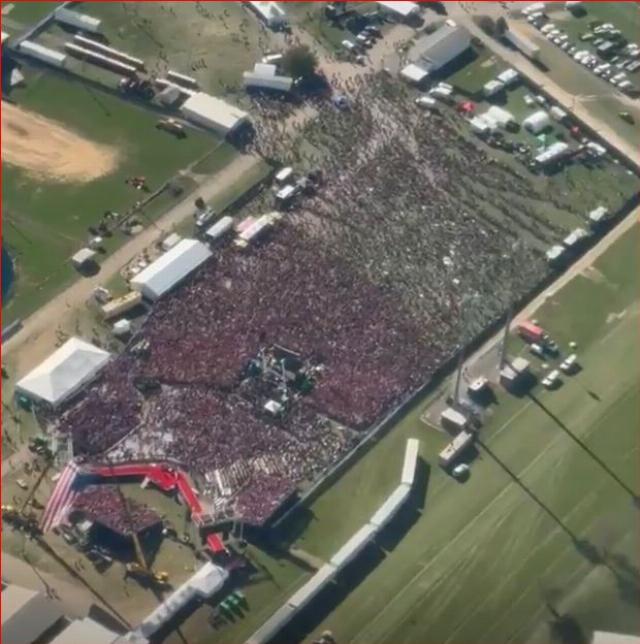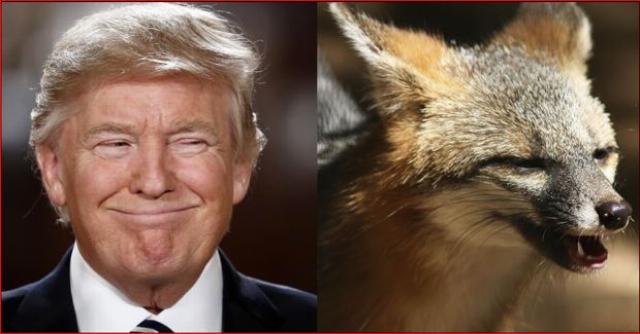Past Presidential Polls Provide a Big Clue About November 5
What do the polls of elections past tell us about the current presidential race?
Borrowing from Charles Dickens’s classic “A Christmas Carol,” miserly Ebenezer Scrooge is visited by ghosts from Christmas past, present, and future, converting him into a kinder and gentler soul.
Political polling also creates scrooges, especially when we see our preferred candidate losing in the polls, or our disliked candidate given a false boost due to the polling sample composition and spin.
The ghost of election present is today, the first week or two of October, less than a month until election day. The Real Clear Politics average shows Harris up 1.8 points over Trump, with only Rasmussen Reports giving Trump a 2-point lead.
Remember that with the Electoral College, the presidential race is actually 50 state races, but still the national polls are a good barometer of voter sentiment. So is crowd size at campaign rallies including Trump’s Lazarus return-from-the-dead moment last week in Butler, PA. Trump’s campaign estimates over 105,000 rally attendees.
In Aurora, Colorado, a few days ago, Trump’s rally venue held 10,000 with some multiple of that watching from outside.
We haven’t met the ghost of election future. If we had, many of us would sleep better at night or else make sure our passports are up to date, ready to move to a less dystopian country, if any still exist.
As a simple exercise, let’s look at presidential polls from 2016 -- Donald Trump vs. Hillary Clinton; 2020 -- Trump versus Joe Biden; and 2024 - Trump versus Kamala Harris.
We can review popular polling organizations that were active in all three elections and look at the same point in time, early October, less than a month until the election.
Here are the specific polls:
For 2024. Quinnipiac (9/19 - 9/22) shows a tie. Reuters/Ipsos (10/4 – 10/7) shows Harris +2. CNN (9/19 – 9/22) has Harris +1. Fox News (9/13 – 9/16) shows Harris +2. On average, it’s Harris +1.
Now look at the same polls eight years ago. The dates don’t match exactly as the polls are not commissioned on identical dates each election cycle but are all in the same general time frame of early October.
For 2016. Quinnipiac (10/5 – 10/6) showed Clinton +6. Reuters/Ipsos (10/6 – 10/10) had Clinton +7. CNN (9/28 – 10/2) also showed Clinton +6. Fox News (10/10 – 10/12) had Clinton +8. The average of these four polls gave Clinton a 7-point national lead over Trump.
In other words, Clinton had a bigger edge over Trump compared to Harris over Trump, and Clinton lost the election.
Now for 2020. Quinnipiac (10/16 – 10/19) had Biden +10. Reuters/Ipsos (10/9 – 10/13) showed Biden +10. CNN (10/1 – 10/4) had Biden +16. Fox News (10/3 – 10/6) showed Biden +10. On average, these polls called Biden +12.
Biden went on to win, although with a very small margin based on a handful of battleground states. NPR said of the close election, "Just 44,000 votes in Georgia, Arizona, and Wisconsin separated Biden and Trump from a tie in the Electoral College."
Averaging the four polls noted above for early October, Clinton was +7, Biden was +12, and Harris is currently only +1.
If both Clinton and Biden had big polling leads in early October and the final margins were very narrow, Harris at the same point in time, with smaller polling margins, is likely to lose.
These comparative margins suggest the Democrat candidate will perform 8 to 10 points lower than the polls today indicate. If Harris today only polls 1 point better than Trump, she will likely lose the general election.
Screenshot: The Last Refuge // by permission
Nate Silver calls the race today “a toss-up.” In 2016, Nate Silver’s 538 Project, on Oct. 12, gave Clinton a 87% chance of winning, compared to Trump at 13%. Today the 538 Project also gives Harris only a 53% chance of winning.
Note the odds at the same points in time and the final outcomes. Clinton had a strong chance of winning and lost. Harris has a very slight chance of winning. Does this foreshadow the same fate for Harris?
Lastly, look at the betting odds, not polls but people putting their money on the presidential race. Polymarket shows Trump with a 55% chance of winning, compared to Harris at 45%.
The battleground state polls are more important as they decide Electoral College totals and the ultimate outcome. I was not able to find comparative battleground states for elections past, only the current election.
Today the RealClearPolitics averages for battleground states show Arizona Trump +1.0, Nevada Trump +1.0, Wisconsin Harris +0.3, Michigan Trump +0.9, Pennsylvania Trump +0.1, North Carolina Trump +0.5, and Georgia Trump +0.5. A toss-up but with Trump holding a slight lead in all but one battleground state.
Election chicanery is still likely. The stories are legion. “Virginia removes 6,303 ‘noncitizens' from voter rolls, fueling fraud allegations.” Or this, “Texas had removed 6,500 noncitizens from its voter rolls. Of those, 1,930 had a history of voting.” And this, “Oregon removes over 1,200 voters from rolls for failing to provide proof of citizenship.”
How many ineligible voters remain on voter rolls across the country? Why is voting one of the only remaining American activities not requiring photo ID?
Rasmussen Reports asked about election integrity and found that almost two-thirds of the country smelled a rat.
A telephone and online survey by Rasmussen Reports and the Heartland Institute found that 62% of likely voters are concerned that cheating will affect the outcome of the 2024 election.
The conclusion is that Harris is underperforming in the polls compared to Clinton and Biden at the same point in the election cycle. Clinton lost, and Biden closely won, although there is much skepticism over that result.
If Harris is running behind both Clinton and Biden in early October, it is reasonable to surmise, barring any potential October surprises, that Trump is favored to win on Nov. 5.
Brian C. Joondeph, M.D., is a physician and writer. Follow me on Twitter @retinaldoctor, Substack Dr. Brian’s Substack, Truth Social @BrianJoondeph, and LinkedIn @Brian Joondeph.







